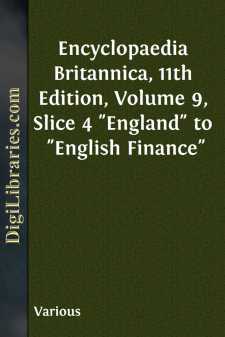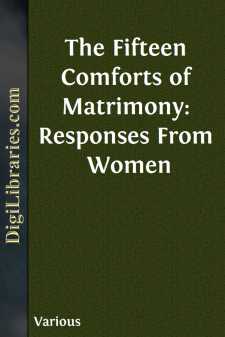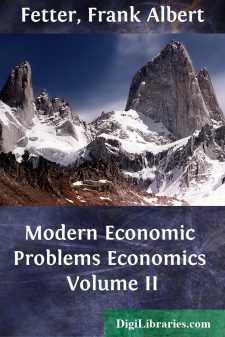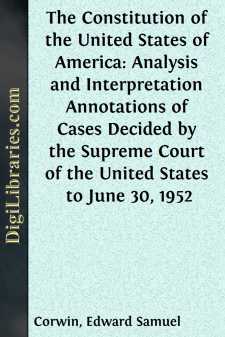Categories
- Antiques & Collectibles 13
- Architecture 36
- Art 48
- Bibles 22
- Biography & Autobiography 813
- Body, Mind & Spirit 142
- Business & Economics 28
- Children's Books 17
- Children's Fiction 14
- Computers 4
- Cooking 94
- Crafts & Hobbies 4
- Drama 346
- Education 46
- Family & Relationships 57
- Fiction 11829
- Games 19
- Gardening 17
- Health & Fitness 34
- History 1377
- House & Home 1
- Humor 147
- Juvenile Fiction 1873
- Juvenile Nonfiction 202
- Language Arts & Disciplines 88
- Law 16
- Literary Collections 686
- Literary Criticism 179
- Mathematics 13
- Medical 41
- Music 40
- Nature 179
- Non-Classifiable 1768
- Performing Arts 7
- Periodicals 1453
- Philosophy 64
- Photography 2
- Poetry 896
- Political Science 203
- Psychology 42
- Reference 154
- Religion 513
- Science 126
- Self-Help 84
- Social Science 81
- Sports & Recreation 34
- Study Aids 3
- Technology & Engineering 59
- Transportation 23
- Travel 463
- True Crime 29
Encyclopaedia Britannica, 11th Edition, Volume 9, Slice 4 "England" to "English Finance"
by: Various
Categories:
Description:
Excerpt
Geographical usage confines to the southern part of the island of Great Britain the name commonly given to the great insular power of western Europe. In this restricted sense the present article deals with England, the predominant partner in the United Kingdom of Great Britain and Ireland, both as containing the seat of government and in respect of extent, population and wealth.
1. Topography.
England extends from the mouth of the Tweed in 55° 46′ N. to Lizard Point in 49° 57′ 30″ N., in a roughly triangular form. The base of the triangle runs from the South Foreland to Land’s End W. by S., a distance of 316 m. in a straight line, but 545 m. following the larger curves of the coast. The east coast runs N.N.W. from the South Foreland to Berwick, a distance of 348 m., or, following the coast, 640 m. The west coast runs N.N.E. from Land’s End to the head of Solway Firth, a distance of 354 m., or following the much-indented coast, 1225 m. The total length of the coast-line may be put down as 2350 m., out of which 515 m. belong to the western principality of Wales. The most easterly point is at Lowestoft, 1° 46′ E., the most westerly is Land’s End, in 5° 43′ W. The coasts are nowhere washed directly by the ocean, except in the extreme south-west; the south coast faces the English Channel, which is bounded on the southern side by the coast of France, the two shores converging from 100 m. apart at the Lizard to 21 at Dover. The east coast faces the shallow North Sea, which widens from the point where it joins the Channel to 375 m. off the mouth of the Tweed, the opposite shores being occupied in succession by France, Belgium, Holland, Germany and Denmark. The west coast faces the Irish Sea, with a width varying from 45 to 130 m.
Counties.AreaStatute
Acres.Population.
1901.Bedfordshire298,494171,240Berkshire462,208256,509Buckinghamshire475,682195,764Cambridgeshire549,723190,682Cheshire657,783815,099Cornwall868,220322,334Cumberland973,086266,933Derbyshire658,885620,322Devonshire1,667,154661,314Dorsetshire632,270202,936Durham649,3521,187,361Essex986,9751,085,771Gloucestershire795,709634,729Hampshire1,039,031797,634Herefordshire537,363114,380Hertfordshire406,157250,152Huntingdonshire234,21857,771Kent995,0141,348,841Lancashire1,203,3654,406,409Leicestershire527,123434,019Lincolnshire1,693,550498,847Middlesex181,3203,585,323Monmouthshire341,688292,317Norfolk1,308,439460,120Northamptonshire641,992338,088Northumberland1,291,530603,498Nottinghamshire539,756514,578Oxfordshire483,626181,120Rutland97,27319,709Shropshire859,516239,324Somersetshire1,043,409508,256Staffordshire749,6021,234,506Suffolk952,710384,293Surrey485,1222,012,744Sussex933,887605,202Warwickshire577,462897,835Westmorland503,16064,303Wiltshire879,943273,869Worcestershire480,560488,338Yorkshire3,882,3283,584,762Total32,544,68530,807,232
The area of England and Wales is 37,327,479 acres or 58,324 sq. m. (England, 50,851 sq. m.), and the population on this area in 1901 was 32,527,843 (England, 30,807,232)....






















